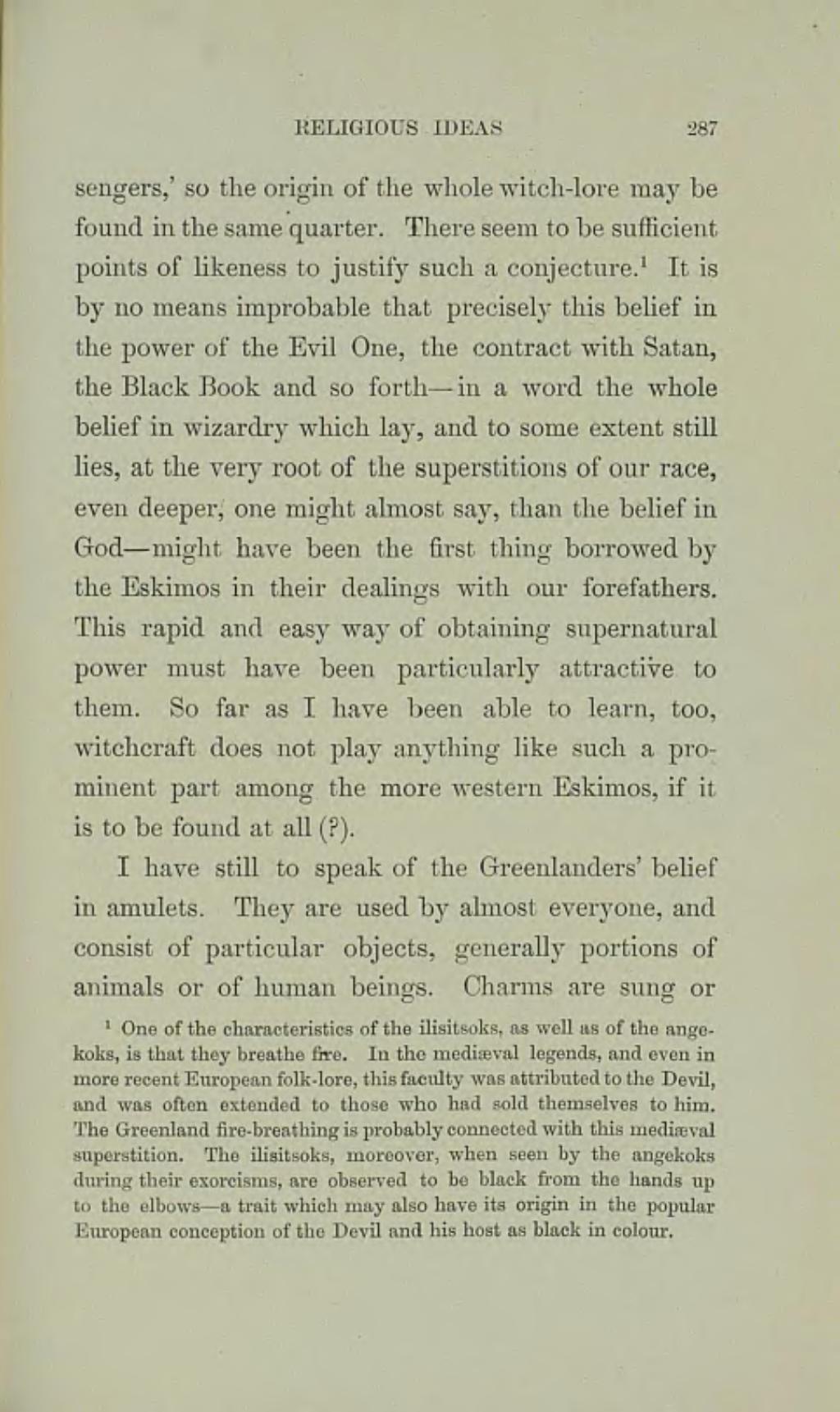sengers,' so the origin of the whole witch-lore may be found in the same quarter. There seem to be sufficient points of likeness to justify such a conjecture.[1] It is by no means improbable that precisely this belief in the power of the Evil One, the contract with Satan, the Black Book and so forth—in a word the whole belief in wizardry which lay, and to some extent still lies, at the very root of the superstitions of our race, even deeper, one might almost say, than the belief in God—might have been the first thing borrowed by the Eskimos in their dealings with our forefathers. This rapid and easy way of obtaining supernatural power must have been particularly attractive to them. So far as I have been able to learn, too, witchcraft does not play anything like such a prominent part among the more western Eskimos, if it is to be found at all(?).
I have still to speak of the Greenlanders' belief in amulets. They are used by almost every one, and consist of particular objects, generally portions of animals or of human beings. Charms are sung or
- ↑ One of the characteristics of the ilisitsoks, as well as of the angekoks, is that they breathe fire. In the mediæval legends, and even in more recent European folk-lore, this faculty was attributed to the Devil, and was often extended to those who had sold themselves to him. The Greenland fire-breathing is probably connected with this mediæval superstition. The ilisitsoks, moreover, when seen by the angekoks during their exorcisms, are observed to be black from the hands up to the elbows—a trait which may also have its origin in the popular European conception of the Devil and his host as black in colour.
